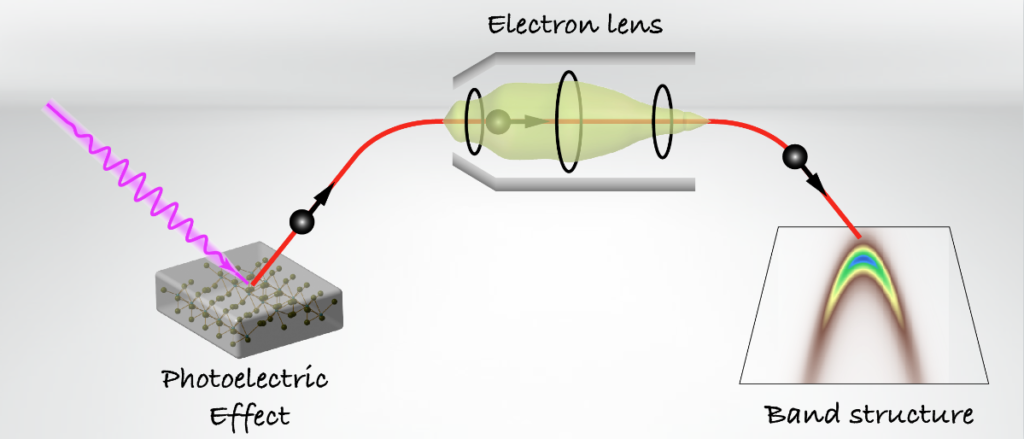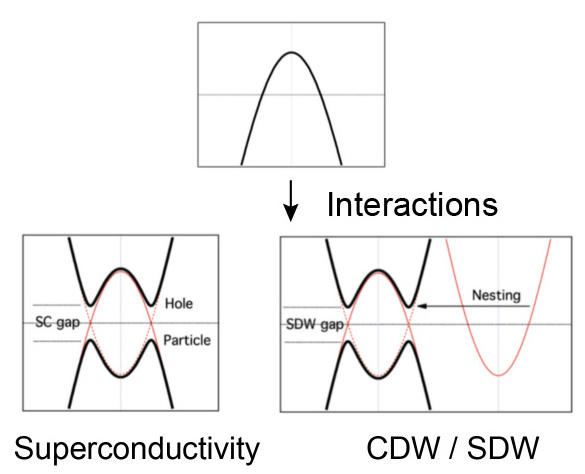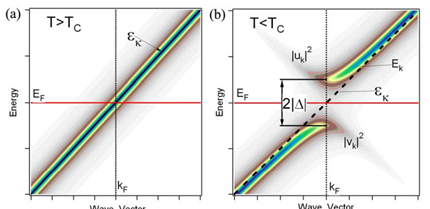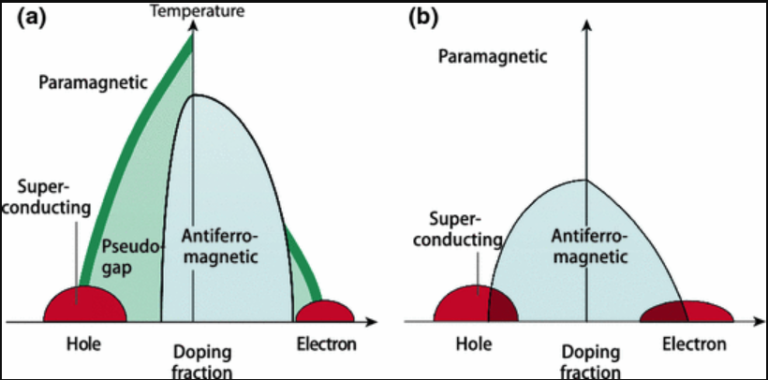
Angle-Resolved Photoelectron Spectroscopy (ARPES) is a useful tool to probe electronic structures of crystals. Based on photoelectric effect, we use a light to kick out the electrons, and measure the angle (k) and energy (E) of outgoing photoelectrons. The photoelectron intensity can be expressed as \(I(k,E) \sim M A(k,E) f(E)\).
Band dispersion is directly contained in the spectral function \(A(k,\omega)\). Thus, any physical problem, that is related to band dispersion, can be studied by ARPES. Some examples are: Topological materials with special band structure; Superconductors: Gap opening in the band dispersion will appear at Fermi level in the superconducting state; Nematic order: Band degeneracy at high symmetry points will be lifted due to the symmetry breaking; Electron-phonon coupling: A kink structure will appear in the band dispersion at the phoono energy; and so on. All these phenomenons are related to the band dispersion, which can be readily studied by ARPES.

We also need to be aware of the spectral weight in the spectral function \(A(k,E)\). In most cases, we are only interested in the band dispersion, and ignore the spectral weight. However, the spectral weight of a band may not be the same over entire Brillouine zone, which may change the appearance of a band in ARPES. In a superconductor, the band dispersion is particle-hole symmetric. But in the spectral function, only part of the band is shown, since the electron weight is not one for all the states. The impurity state is another example. We expect a non-dispersive band for impurity states as the impurities have no translation symmetry. However, in the spectral function, we find that the impurity states are highly localized in momentum space, and only a small part of the non-dispersive band is occupied. 1

The matrix element effect \(M\) is related to many factors such as the symmetries of electron orbitals in solids, the polarization of light, and photon energies. It is usually complicated and cannot be fully understood in most of the cases. However, the ARPES setup generally has mirror symmetries. From the mirror symmetry eigenvalues of \(\psi_f\), \(\mathbf{P}\) and \(\psi_i\) in \(M \sim <\psi_f|\mathbf{A} \cdot \mathbf{P}|\psi_i>\), we can get information on the orbital character of the bands. 2
[2] See supplement of Science 360, 182 (2018).




